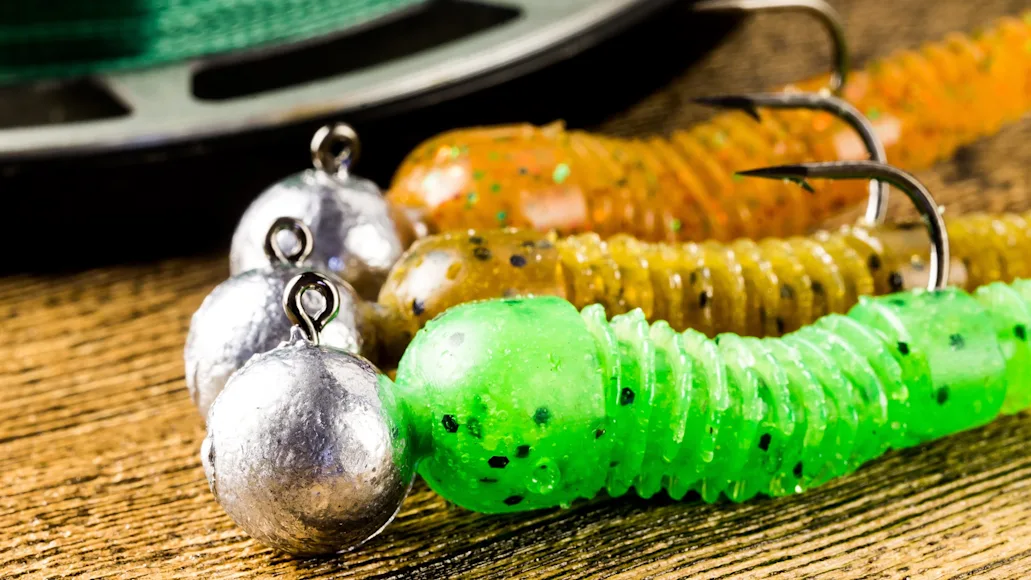_We may earn revenue from the products available on this page and participate in affiliate programs. Learn more ›
_
What is a jig? Well, depending on who you’re talking to a jig could be anything from a lively Irish dance to an apparatus used with a tool to hold a piece of work in place. But what is a jig in fishing? Well, the term is in this context is almost as broad. Generally speaking, a jig for fishing consists of a hook with some sort of metal—usually lead— molded onto it to add weight so that the lure sinks. Jigs are typically bounced along the bottom, but can also be swum below the surface. They are incredibly versatile and effective lures; jigs come is a huge array of styles and are used to catch nearly the entire gamut of popular gamefish. So, what is a jig in fishing? It’s one of the best fishing lures
of all time, and one you need to have in your tackle box—in abundance. Let’s take a closer look.
What Is a Jig Meant to Imitate
Jigs are used to mimic a wide array of prey, including anything from a leech for pike or a crawfish for bass to a small minnow for crappie and perch. This spectrum is as wide or wider than spectrum of fish that are susceptible to a jig. The key to choosing the right jig for the fishing you are doing is making sure that you’re using the appropriate size and color jig, given the fish you’re and the prey they are relating to. The next stop is to make sure you’re fishing it correctly.
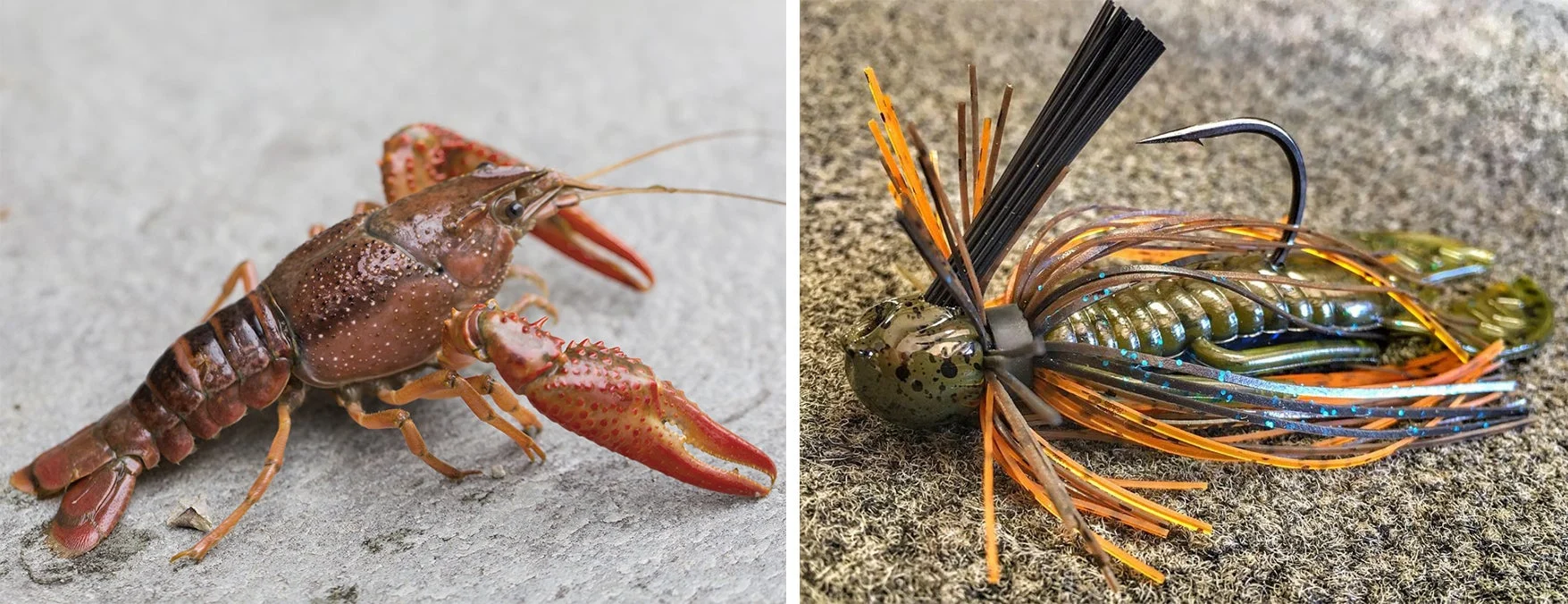
A jig hopped or dragged along the bottom does a great job at imitating a crawfish. ddukang / Adobe – Shaye Baker
How to Fish a Jig
All jigs can be grouped into one of two categories, based on how they are fished. Most are bottom baits, and the rest are used to target fish that are suspended up off the bottom. The verb “jig” as it relates to fishing generally means to bounce a bait up and down. But sometimes fishing a jig looks more like dragging one slowly across the bottom. Other times, you can fish a jig high in the water column, just beneath the surface. The truth is, there’s a jig that can be fished at every depth in between. Again, it boils down to the fish you are after and what prey you’re trying to imitate, so, let’s break it down further.
Types of Jigs in Fishing
The basic jig may simple be a hook with metal molded onto it to add weight, but what that hook looks like, the shape in which the metal is molded, and how the jig is dressed varies widely. Here’s a look at different types of jibs by target species.
Jigs for Bass Fishing
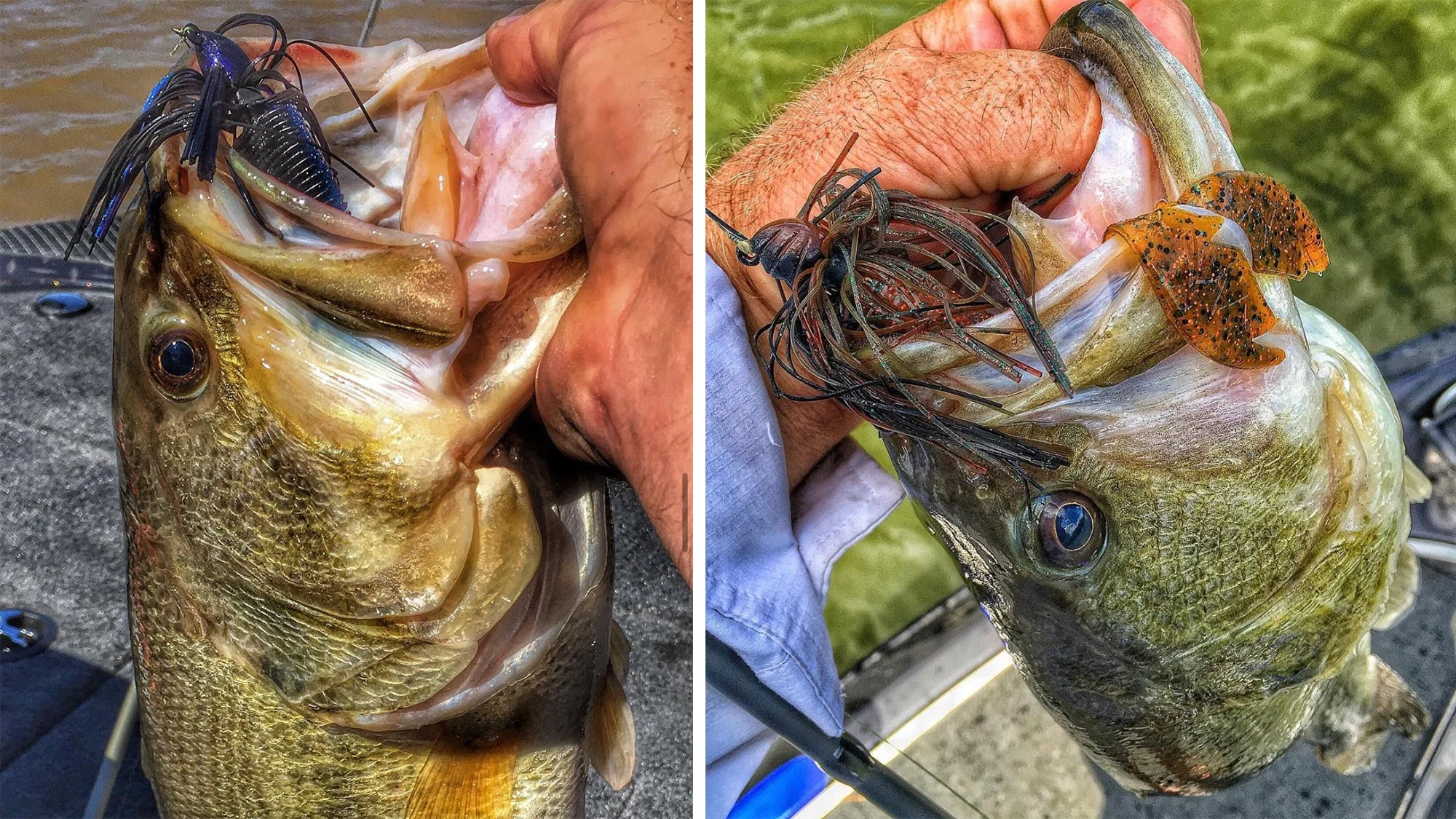
A couple of nice largemouths taken on skirted jigs. Shaye Baker
Jigs used for bass can be either skirted or skirtless. Typically, skirted jigs are referred to simply as jigs, and the ones without skirts are called jig heads. Examples of skirted jigs for bass fishing are: football jigs
, and casting jigs
. Non-skirted jig heads, like shakey heads and Ned heads, are typically paired with some sort of soft-plastic like a worm or craw. There are other bass baits that some might consider jigs, including jigging spoons, hair jigs, vibrating jigs (or chatterbaits), and swing or wobble heads.
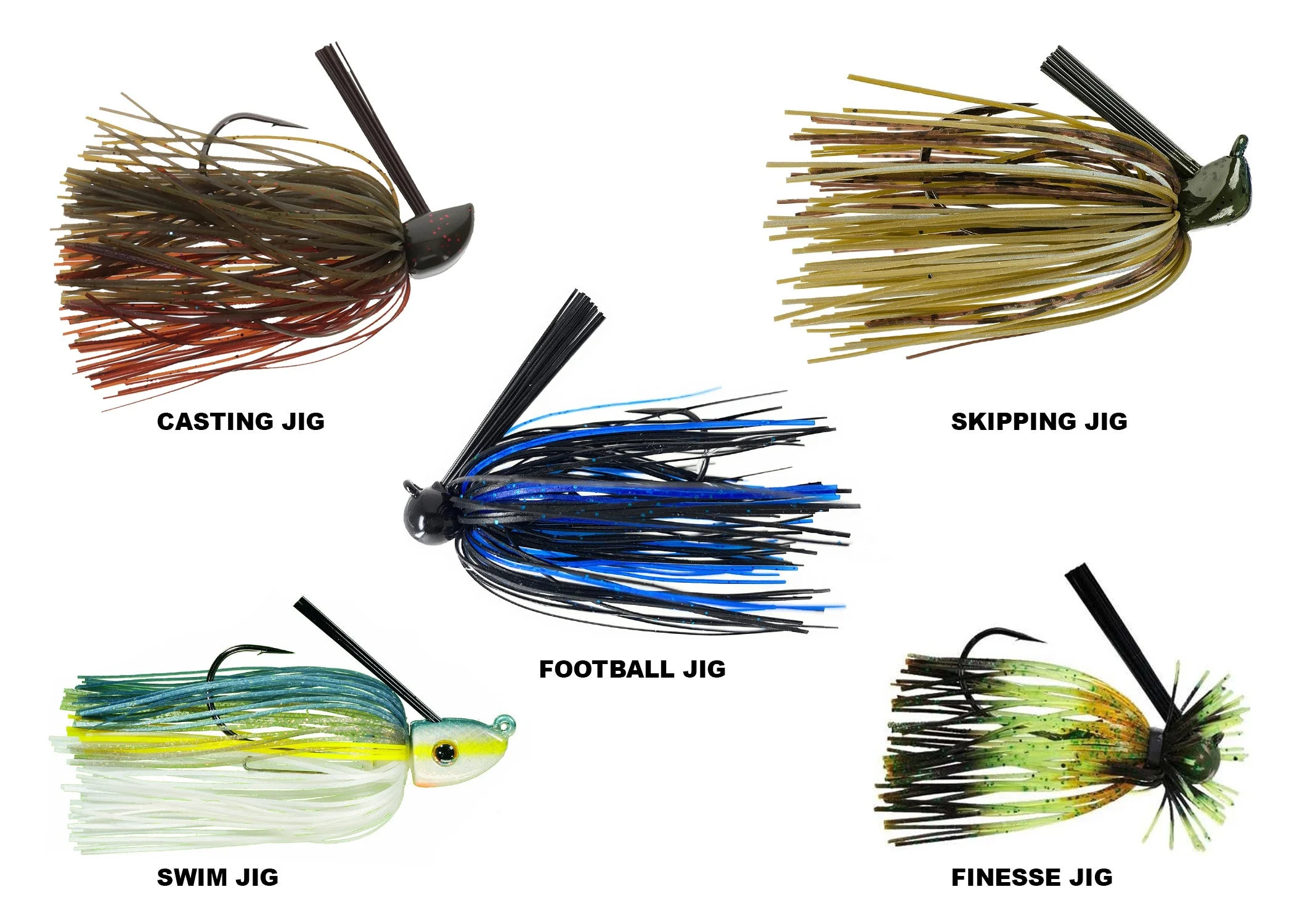
Five different types of skirted jigs for bass fishing.
Trout and Panfish Jigs
Jigs used to catch trout and panfish are much smaller than bass jigs. The best jigs for trout usually resemble the local forage, while the panfish jigs often come in a wider variety of bright colors. Trout and panfish jigs are comprised of jig heads and small soft-plastic baits like grubs or tubes, or they are tied using thread, hair, feathers, or fibers
. Blades are sometimes added to these jigs, too, converting them into what amounts to small spinnerbaits like Beetle Spins or small underspins.
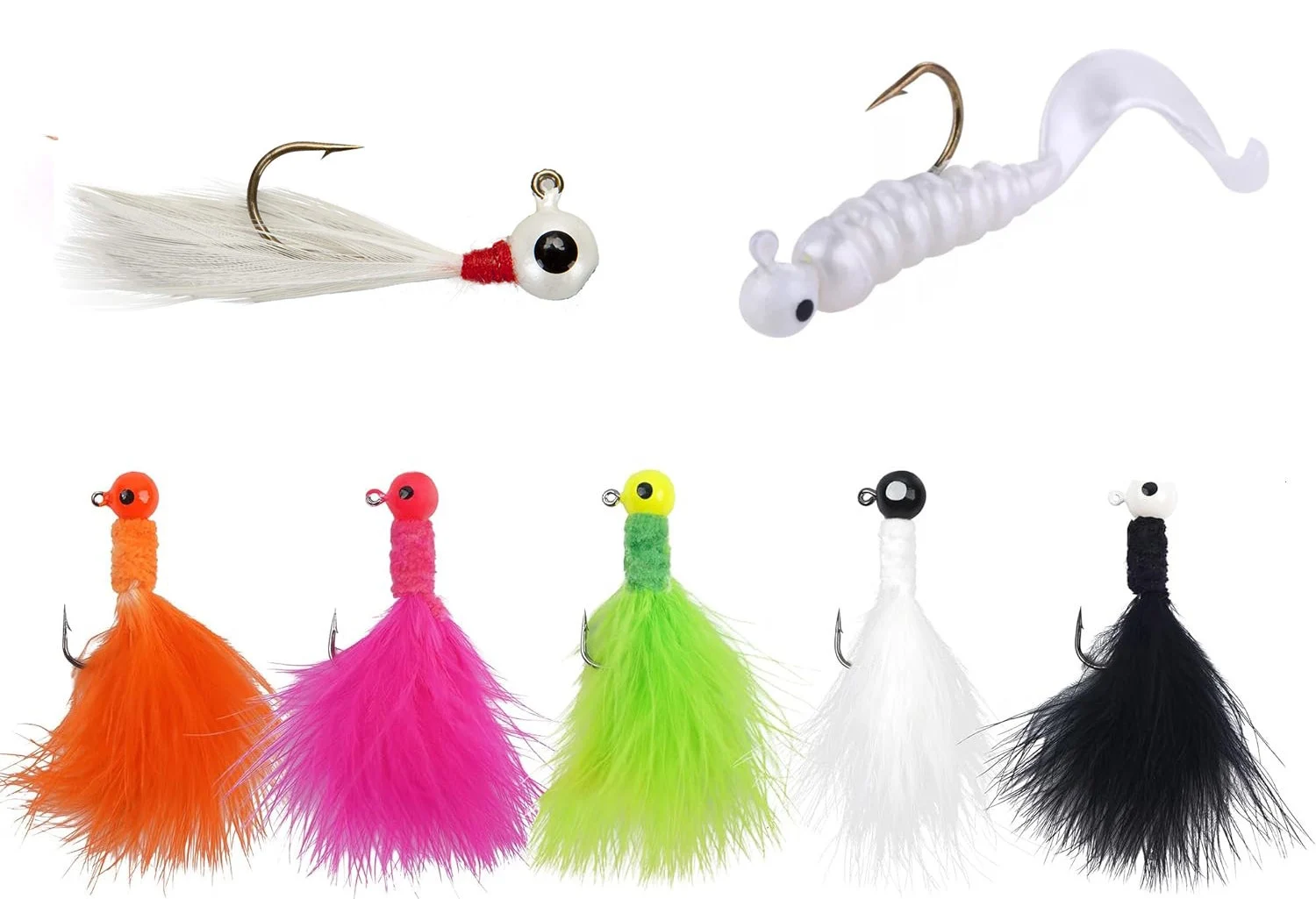
Small hair jigs, curly-tails, and marabou jigs are great for catching trout and panfish.
Jigs for Walleye Fishing
As you might expect, walleye jigs are typically smaller than bass jigs, but a little bigger than those used when targeting trout and panfish. Durable soft-plastic swimbaits or curly-tail grubs work great pair with jigs for pursuing these toothy fish. Jig heads used for walleye fishing
are often brightly colored and can also be paired with live bait, like worms and minnows as well.
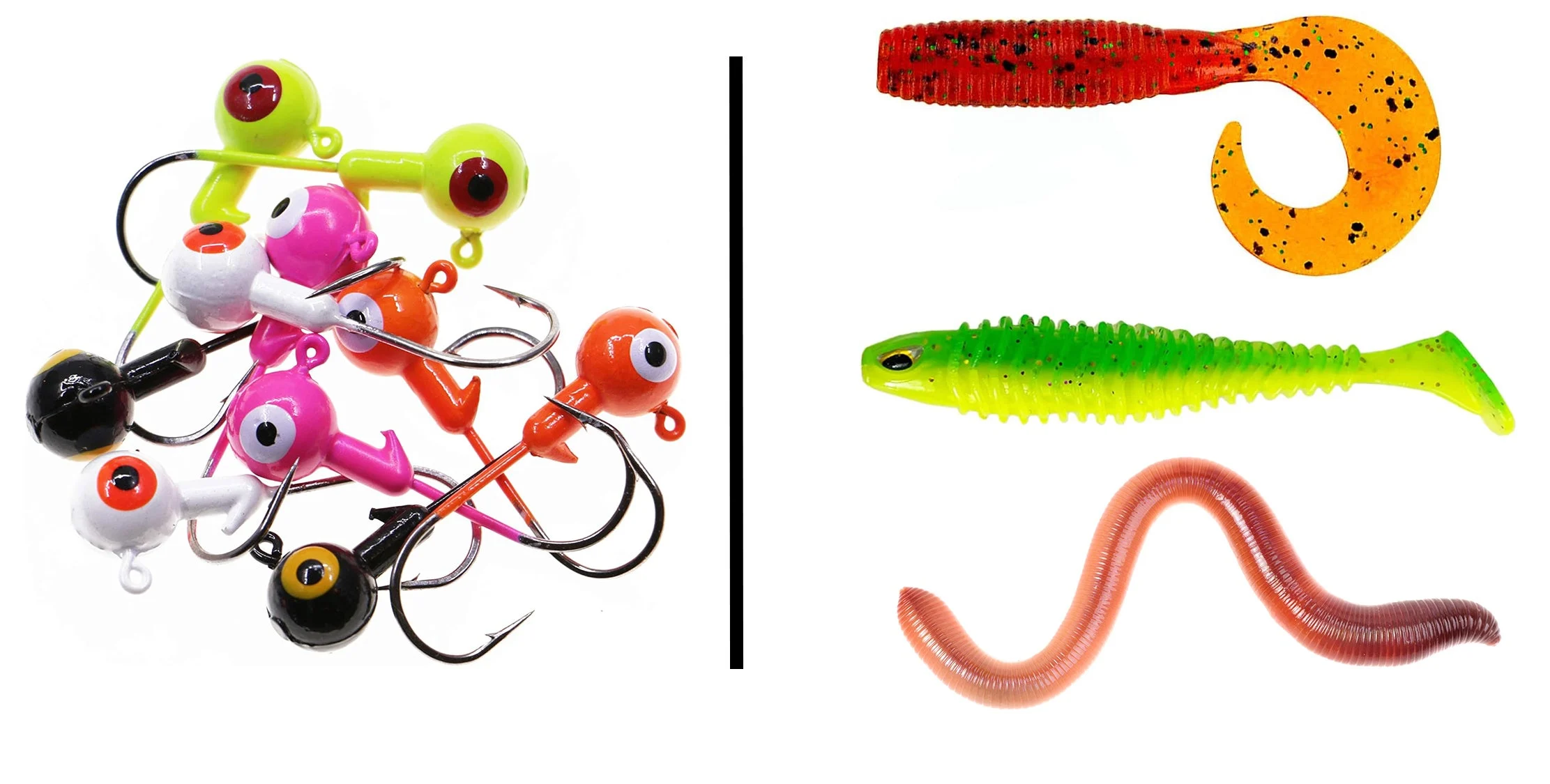
Walleye anglers will often pair a brightly colored jig head with a grub, swimbait, or live bait.
Muskie and Pike Jigs

A skirted jig or basic ball-head paired with a 5- to 9-inch plastic swimbait is a top musky bait. Amazon
Big hair jigs work great for catching pike and muskie. These jigs are among the largest of all used jigs for freshwater fishing, but that doesn’t necessarily mean they’re the heaviest. Some may be 6-inches long but only weigh 1/4 ounce, while others weigh more than 1/2 ounce. It all depends on how deep you want them to go. Skirted jigs and skirtless jig heads paired with large soft-plastic grubs and swimbaits also work well for both pike and muskie.
Saltwater Jigs

A white bucktail jig is a classic and highly effective saltwater lure. Amazon
When you venture into the realm of saltwater fishing, the jig conversation expands even further in every direction. Jigs can be used inshore to target redfish and other species shallow, and they can be used incredibly deep to target offshore species as well. As with many of the other jig categories, saltwater jigs can be skirted or skirtless heads paired with a wide range of soft plastic lures, from basic paddle-tails to shrimp imitations. They can also be tied with feathers, hair, or other materials and range widely in color, size, and weight. A simple white bucktail jig
, for example, as a classic that should be in just about every saltwater angler’s box.

